landscape designs, beautiful AND sustainable …
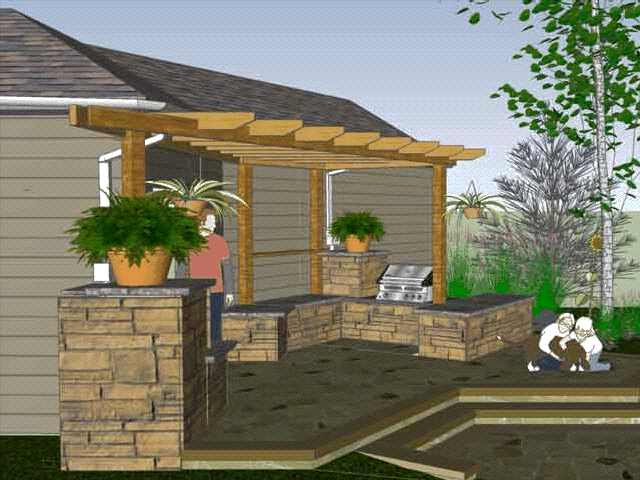 watch to see where the water is, and just how many rain barrels it takes to equal this design
watch to see where the water is, and just how many rain barrels it takes to equal this design
what follows is a plethora of designs incorporating the RainBench DIY kit as a customizable building block, from 40 to 96 gallons each and a variety of different materials… hang on to your hats!
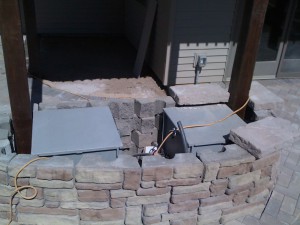 80 gallons, a pump on switch and 25′ retractable hose reel..
80 gallons, a pump on switch and 25′ retractable hose reel..
The water comes from a downspout on the corner of the house, filtered through our diverter, into 1″ irrigation lines (available at most landscape supply or home garden stores), run under the patio to the bottom of each ‘rain blox‘, filling from the bottom, overflowing into the gardens when full.
(check out the youtube video below for a brief walkthrough of this finished project)
 Also see more details of the pump, hose reel configuration in our ‘advanced rainwater harvesting‘ blog.
Also see more details of the pump, hose reel configuration in our ‘advanced rainwater harvesting‘ blog.
On top of reducing runoff, the stored rain can then be used for irrigation. This can make its owners feel good about it – and not just because it’s a great place to hang out.
This project also included night lighting, which was incorporated into the design as seamlessly as the rainwater storage.
 what follows is that ‘plethora of designs’ i was talking about:
what follows is that ‘plethora of designs’ i was talking about:
Once you realize just how easily these Second Rain DIY bench kits or blox can be customized and connected, you can begin to see the unlimited potential that allows the following designs, and then some…
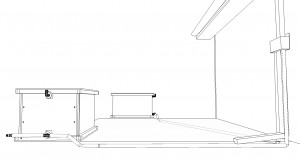 As a quick overview (more details can be found on the ‘how to’ pages above), the diagram to the left shows how you get water from your downspout using a diverter, then underground to wherever your reservoirs are located. They will fill from the bottom, so connect as many as you want to size your system according to your needs (click thumbnails below for details of how standard DIY rain bench kits are connected)
As a quick overview (more details can be found on the ‘how to’ pages above), the diagram to the left shows how you get water from your downspout using a diverter, then underground to wherever your reservoirs are located. They will fill from the bottom, so connect as many as you want to size your system according to your needs (click thumbnails below for details of how standard DIY rain bench kits are connected)

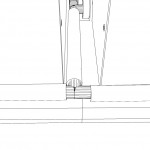
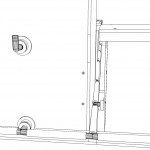 click on any of these three pics for a closeup of how simply these reservoirs connect, for infinite options
click on any of these three pics for a closeup of how simply these reservoirs connect, for infinite options
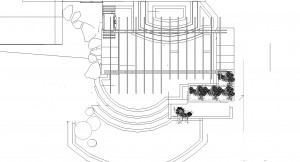 Left, the last of the plain old line drawings! Here is a design that incorporates benches, counters near a grill, and self watering planters for a total of around 500 gallons above ground around this patio, available via gravity or pump for watering. Scroll down for some perspectives…
Left, the last of the plain old line drawings! Here is a design that incorporates benches, counters near a grill, and self watering planters for a total of around 500 gallons above ground around this patio, available via gravity or pump for watering. Scroll down for some perspectives…
 The planter and curving wall on the left serve a new front entry, harvesting part of the runoff from a 4,000 sq. ft. roof, reducing the homeowners’ water footprint as well as lowering their maintenance for the beautiful plantings along this walkway.
The planter and curving wall on the left serve a new front entry, harvesting part of the runoff from a 4,000 sq. ft. roof, reducing the homeowners’ water footprint as well as lowering their maintenance for the beautiful plantings along this walkway.
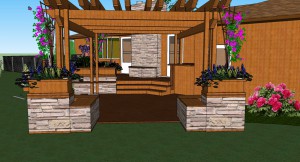
The design above, like all the others, uses only DIY RainBench kits, customized to make benches, self watering planters, and tables – all filling via two diverters at the corners of the house.
Below, a couple of simple options for an existing concrete slab in the backyard…

The design below for a children’s barn at our local zoo can hold over 600 gallons inside a wall, pillar and bench at its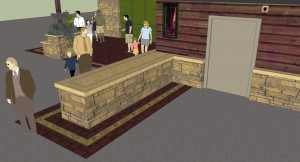 entrance.
entrance.
Okay, ready for more outdoor living designs? Come on!
Using 3D rendering software combined with Google Earth capabilities, we can now design outdoor spaces for anyone, anywhere. With a few details (1 or 2 ground level photos help 🙂 even calculating the amount of runoff from nearby buildings can be done easily.
The two outdoor living spaces shown above and below hold over 1150 gallons each, combining for over 2,300 gallons of rainwater harvesting, and a great solution for pool patios at these condos in Florida. Reducing runoff, automatically filling the pools or watering the landscape (especially during watering restrictions), and recharging groundwater supplies are the goal here. Enhancing the living space is a bonus!
Alright, we’ll wrap it up here…
We’re certainly not done yet, and we’ll be putting more of our projects up here continuously. Here are a couple more ‘rain kitchens’ to keep you thinking…
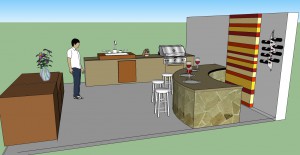
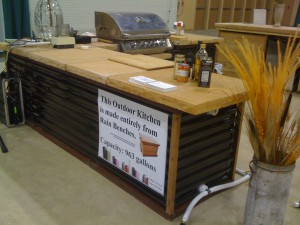 If you would like some help or advice on integrating rainwater into your design, let us know! We are happy to help, and although we cannot draw up designs for free, they are more affordable than you might think (as little as $500 for 3D!) We can give you details for free on how it all works, and welcome any feedback on how to make this website better.
If you would like some help or advice on integrating rainwater into your design, let us know! We are happy to help, and although we cannot draw up designs for free, they are more affordable than you might think (as little as $500 for 3D!) We can give you details for free on how it all works, and welcome any feedback on how to make this website better.


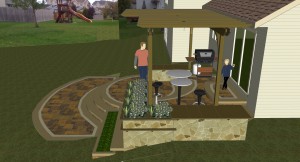


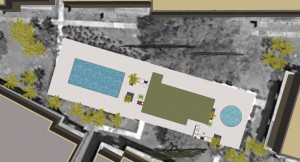
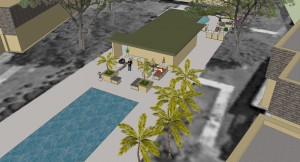
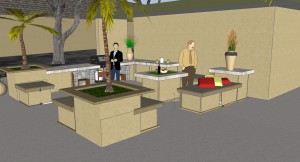
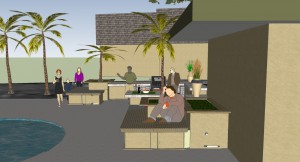
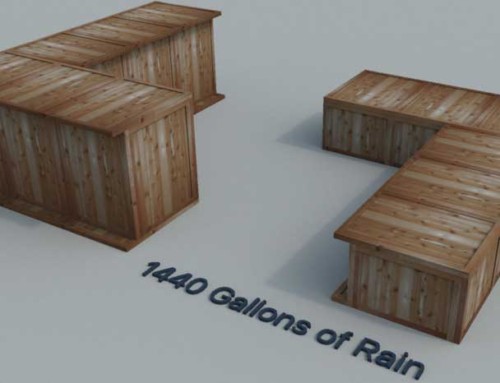
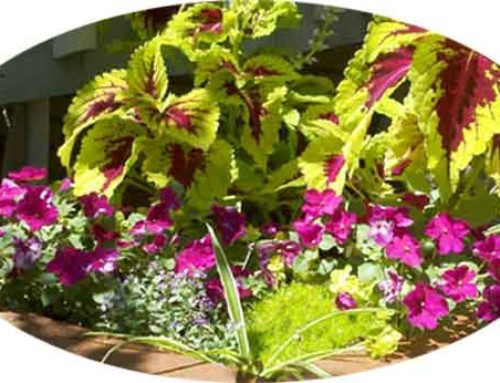
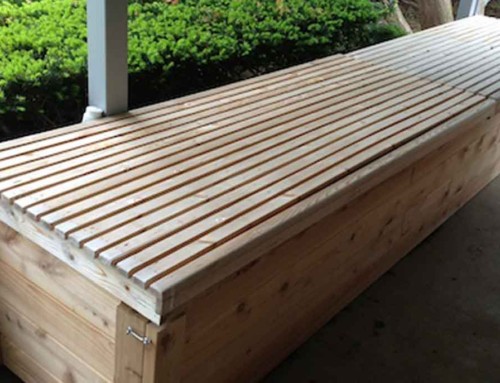
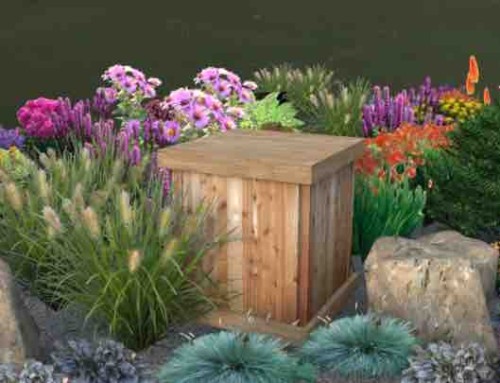
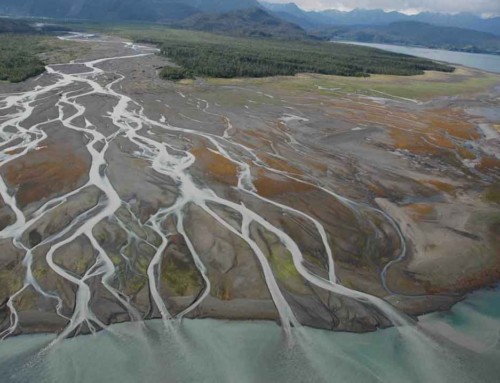

Just purchased the home of Nate **** *** in Poynette, WI and love the brick patio. Nate stated that you were the inspiration for this project so I thanked Nate and want to thank you also. We love it. Next project will be the deck. It is now a wood deck approximately 10 years old, 2-3 feet above the ground coming off of the back of the home. It faces the west. We may be looking for something different, but NOT pricey. Any suggestions would be appreciated. I would like it to coordinate with the existing brick patio/fire pit. We are only in the research stage right now, but like this quality. Also, Nate showed us how to use the rain bench, now it has to rain. Again, just saying thankyou for the great design.
Love the website and the great plans.
Love the landscape ideas. Do you have any plans that you can share that show what type of pump you are using and how it all fits inside the bench?
Thanks for everything. Great website and blog.
I am not sure if I understand this blog prelproy, but are you using this water for drinking? There are lots of that use the same premise as this one, but there are too many toxins falling in the rain water for this to be acceptable drinking water.
Karen – most of the systems we design, install and suggest are strictly for irrigation, not drinking. You are right that it needs to be filtered properly in order to be safe for drinking, and that can be done, too. But for most homes well over half of water use is outside, watering gardens (US avg is 58% outdoor use). We just think there are so many more useful ways to build in rainwater storage for this, it’s time we start doing it.